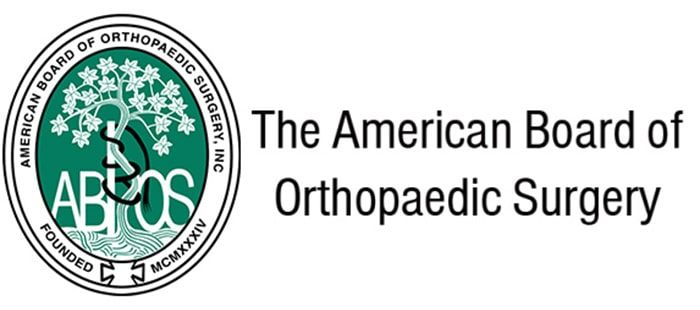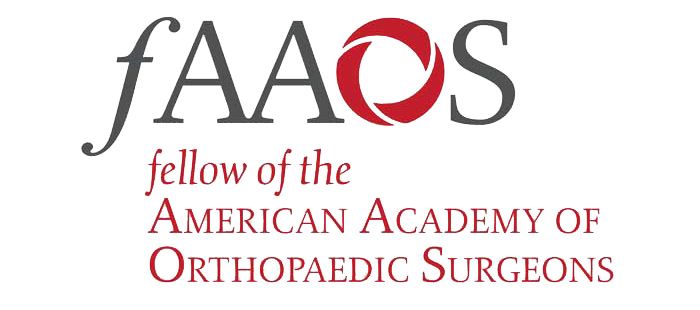Our hands and wrists are essential for almost every activity we do, from gripping objects to typing on a keyboard. However, because of their complex structure and frequent use, they are also prone to a variety of injuries and conditions. At Dearborn & Associates Institute for Joint Restoration, Dr. John Dearborn provides expert diagnosis and treatment for hand and wrist conditions in Fremont and Menlo Park, CA. By understanding these conditions and the available treatment options, patients can take steps toward recovery and restored functionality.
In this blog, we will explore common hand and wrist conditions, their symptoms, and the advanced treatment options available at Dearborn & Associates.
Common Hand and Wrist Conditions
The hand and wrist consist of numerous small bones, tendons, ligaments, and nerves, all of which need to work together for optimal movement and dexterity. Unfortunately, injuries, overuse, and degenerative conditions can disrupt this delicate balance, leading to pain and reduced mobility. Below are some of the most common hand and wrist conditions.
1. Carpal Tunnel Syndrome
Carpal tunnel syndrome (CTS) is a condition caused by compression of the median nerve, which runs through the carpal tunnel in the wrist. This nerve controls sensation in the thumb and fingers (except the pinky), as well as movement in parts of the hand. When the carpal tunnel becomes narrowed due to swelling, inflammation, or repetitive movements, the nerve is compressed, resulting in numbness, tingling, and weakness in the hand and wrist.
CTS is often associated with activities that involve repetitive wrist movements, such as typing, using a mouse, or assembly line work. Early intervention is important to prevent long-term nerve damage and restore hand function.
2. Trigger Finger
Trigger finger, also known as stenosing tenosynovitis, occurs when the tendons that control finger movement become inflamed and thickened. This can cause the affected finger to “lock” in a bent position before snapping back into place, often with a painful sensation. The condition most commonly affects the thumb, ring finger, or middle finger.
Repetitive gripping motions are a common cause of trigger finger, and it is often seen in individuals who engage in activities such as manual labor, gardening, or knitting. In some cases, underlying conditions like diabetes or rheumatoid arthritis may also contribute to its development.
3. De Quervain’s Tenosynovitis
De Quervain’s tenosynovitis is a condition that affects the tendons on the thumb side of the wrist. These tendons become inflamed or irritated, leading to pain and swelling near the base of the thumb. The pain may worsen with movements like gripping, grasping, or twisting the wrist, making it difficult to perform everyday tasks.
This condition is often referred to as “mommy’s thumb” because it frequently affects new mothers who repetitively lift and carry their babies. However, anyone who performs repetitive thumb movements can develop De Quervain’s tenosynovitis.
4. Arthritis of the Hand and Wrist
Arthritis is a degenerative condition that affects the joints and can lead to pain, stiffness, and swelling. In the hand and wrist, the two most common types of arthritis are osteoarthritis and rheumatoid arthritis. Osteoarthritis occurs when the cartilage that cushions the joints wears away over time, causing bone-on-bone friction. Rheumatoid arthritis, on the other hand, is an autoimmune condition that attacks the joint lining, leading to inflammation and joint damage.
Arthritis in the hand and wrist can significantly reduce grip strength, limit range of motion, and make daily activities like opening jars or typing extremely difficult.
5. Wrist Fractures
Wrist fractures, or broken wrists, are common injuries, particularly in cases of falls where individuals instinctively extend their hands to break the fall. The most common type of wrist fracture is a distal radius fracture, which occurs near the base of the thumb. Other types of wrist fractures can involve the small bones of the wrist, such as the scaphoid.
Symptoms of a wrist fracture include immediate pain, swelling, and difficulty moving the wrist or hand. Prompt treatment is essential to ensure proper healing and prevent complications such as malalignment or chronic pain.
Diagnosing Hand and Wrist Conditions
Proper diagnosis of hand and wrist conditions is essential for successful treatment. At Dearborn & Associates, Dr. John Dearborn performs thorough evaluations that may include a physical exam, patient history, and diagnostic imaging (such as X-rays, MRI, or ultrasound). This comprehensive approach ensures that each patient receives an accurate diagnosis and an individualized treatment plan.
Treatment Options for Hand and Wrist Conditions
Depending on the severity of the condition, Dr. Dearborn offers both non-surgical and surgical treatment options to address hand and wrist problems. The goal is always to reduce pain, improve function, and enhance the patient’s overall quality of life.
1. Non-Surgical Treatments
For many hand and wrist conditions, non-surgical treatments are the first line of defense. These treatments include:
- Physical Therapy: Targeted exercises and stretches can help improve strength, flexibility, and range of motion in the hand and wrist. Physical therapy may also involve manual therapy techniques and modalities such as ultrasound or heat therapy.
- Bracing or Splinting: Wearing a brace or splint can help immobilize the hand or wrist, allowing inflamed tissues to heal and preventing further injury.
- Medications: Nonsteroidal anti-inflammatory drugs (NSAIDs) can reduce inflammation and relieve pain in conditions such as arthritis or tendinitis. In some cases, corticosteroid injections may be recommended for more significant pain relief.
2. Surgical Treatments
When conservative treatments fail to provide relief, or if the condition is more severe, surgical intervention may be necessary. At Dearborn & Associates, Dr. Dearborn specializes in minimally invasive surgical techniques, ensuring that patients experience less pain, smaller incisions, and quicker recovery times.
- Carpal Tunnel Release: For patients with carpal tunnel syndrome, carpal tunnel release surgery can relieve pressure on the median nerve by cutting the ligament that compresses it. This procedure can be performed using minimally invasive techniques, leading to faster recovery.
- Trigger Finger Release: In cases of trigger finger, surgery may be required to release the affected tendon and restore smooth movement of the finger.
- Wrist Fracture Repair: If the wrist fracture is complex or has not healed correctly, surgical repair may involve realigning the bones and stabilizing them with plates, screws, or pins.
Preventing Hand and Wrist Problems
While some hand and wrist conditions are unavoidable, there are steps individuals can take to reduce their risk. Regular stretching and strengthening exercises for the hands and wrists can help maintain flexibility and prevent overuse injuries. It’s also important to take breaks during repetitive tasks, use ergonomic equipment, and avoid gripping objects too tightly.
For individuals who have already experienced hand or wrist problems, early intervention is key. Seeking medical advice at the first sign of pain or discomfort can help prevent the condition from worsening and reduce the likelihood of long-term damage.
Moving Toward Hand and Wrist Health
At Dearborn & Associates Institute for Joint Restoration, Dr. John Dearborn and his team are committed to helping patients overcome hand and wrist conditions and regain their functionality. Whether you’re suffering from carpal tunnel syndrome, arthritis, or a wrist fracture, Dr. Dearborn provides expert care and personalized treatment plans to meet your specific needs. With locations in Fremont and Menlo Park, CA, Dearborn & Associates is here to help you get back to living pain-free and enjoying life to the fullest.
Sources:
Gelberman, R. H., & Szabo, R. M. (1983). Carpal Tunnel Syndrome. Journal of Bone and Joint Surgery.
Wong, M., & Hagberg, W. (2010). Surgical Treatment of Trigger Finger. Journal of Hand Surgery.
Weiss, A. P., & Akelman, E. (1993). Arthritis of the Hand and Wrist. New England Journal of Medicine.




